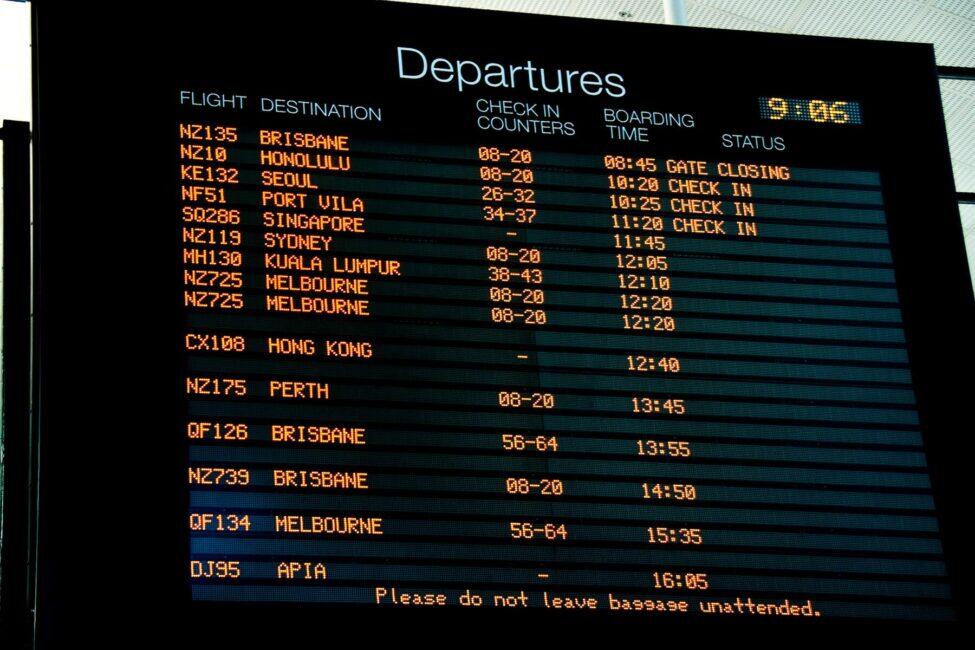When bad airports happen to good people.
Some airports are good, some airports are bad, and some are downright ugly. When it comes to qualifying the pain and pleasure of time spent in the terminal, there are some universal factors to consider: How long are security lines? How likely is my flight to depart on time? Will my flight get canceled for no reason?
For travelers who prefer to be armed with data when planning their trips, there’s the Airport Pain Index, a definitive ranking of America’s best and worst airports, based on crunched data and broken down by category.
Market research firm Wakefield Research put out the pain index this summer, and for residents of the Big Apple, the news is bleak: New York-Kennedy (JFK), New York-LaGuardia (LGA) and Newark (EWR) ranked dead last on the index among America’s favorite airports, while Portland (PDX), San Diego (SAN), and Honolulu (HNL) occupied the top three slots.
How do you know which airports are best and worst in terms of delays, commutes, and even average costs, and how do you manage the pleasure and the pain?
Percentage of On-Time Departures
When it comes to departure delays, Honolulu (HNL) and Portland (PDX) have the best on-time record, while at New York-LaGuardia (LGA) and Newark (EWR), delays were the most persistent.
Recommended Fodor’s Video

Pain management: Plan to be on time when flying out of Honolulu or Portland, as your punctual flight will not hesitate to leave without you. When flying out of LaGuardia or Newark, still give yourself a good cushion of time, but sign up for flight alerts via text or email so you can learn of possible delays before you head out to the airport.
Percentage of Flight Cancellations
It’s one thing to wait it out at the gate while your flight is delayed. It’s another to rush through security and over to the departures hall only to find that your flight—and your hopes of a stress-free vacation—is canceled altogether. In terms of nixing flights completely from its schedule, LaGuardia and Newark are once again the nation’s worst offenders, according to Wakefield. Meanwhile, Honolulu and Salt Lake City (SLC) are considered the most unlikely to cancel your flight.
Pain Management: Always have a contingency plan. Keep a change of clothes, medications and important documents in your carry-on, and if your flight is canceled, avoid the long and frustrated line waiting to speak to a customer service representative. Instead, pull out your phone immediately and call your airline’s customer service line. Most likely you’ll get an agent to speak with you on the phone while your fellow stranded passengers are still elbowing their way through the line.

Average Cost of Airfare
Not all airports are created equal, and not all fares are, either. Thrifty travelers would do well to consider booking tickets to either Las Vegas (LAS) or Fort Lauderdale (FLL), where fares were ranked the cheapest. Those looking to travel to Charlotte, NC (CLT) or Washington, D.C. (IAC), on the other hand, should brace for sticker shock.
Pain Management: Think creatively. Can you fly to an airport in a nearby city and rent a car, or are you willing to add an extra connecting leg to your ticket? Strategies like this can drive down the price of a ticket, as can booking mid-week or during the off-season.
Distance From the Airport to Downtown
Your vacation starts when you step off the plane, so why would you want to spend another two hours stuck in traffic as you try to get to your hotel? Impatient travelers will love the experience of flying into either San Diego or Boston (BOS), where the city’s downtown is just a few minutes by car from the airport. Meanwhile, travelers to Denver (DEN) and D.C. should brace for a long post-flight commute, as these airports are located the furthest away from their city centers.
Pain Management: Plan your arrival time with care. If you’re flying into a city where the airport is miles away from your hotel or ultimate destination, time your arrival to avoid rush hour and the traffic gridlock that inevitably comes with it.
Taxi-in and Taxi-out Time
It’s one thing to be stranded at the gate, where you still have Starbucks, Hudson News, and maybe even an Xpress Spa nearby. It’s another to be stuck on your flight, waiting it out during an agonizingly slow taxi into the airport, or out to the runway.
Chicago-Midway (MDW) and Tampa (TPA) were Wakefield’s best-ranked airports in terms of taxi-in and taxi-out times, meaning they got you from the runway and into the air quickest, and from landing and up to the gate equally fast. Meanwhile, it’s once again LGA and JFK that occupied the worst slots on the list in terms of both taxi-in and taxi-out sluggishness.
Pain Management: Play it cool and factor in cushion time. If you’re flying into an airport where you know the taxi-in time is likely to be long, add an extra 30 minutes or so to your estimated arrival time to keep yourself from feeling like you’re running late before you even deplane.
Number of Destinations Serviced by Direct Flights
An airport is only as good as the places it can take you. Dallas/Fort Worth (DFW) and Chicago-O’Hare (OHR) were the winners in the category of number of nonstop destinations, meaning that for travelers eager to have a range of cities available to them without needing to transfer planes, these two airports offer just the ticket. Honolulu, meanwhile, ranked dead last in terms of number of destinations available from its gates.

Pain Management: If your travel plans don’t allow you to avoid a layover, make sure to give yourself ample time to switch gates, grab a snack, and make sure your luggage can also be transferred in time. That means allowing at least a full 90 minutes between flights. The closer you cut it, the higher your chance of missing your connection altogether, so plan accordingly.
Security Wait Times
In addition to having to take off your shoes, remove your liquids, and pass through a scanner, the indignity of airport security often involves long, snaking lines that require endless waiting. According to the Airport Pain Index, the average traveler flying through an average airport on an average Friday afternoon will wait 15-30 minutes in the security line before being able to head to his or her gate. But at Boston-Logan (BOS), those wait times can drag to a full 45 minutes, placing that airport in the bottom of this category.
Pain Management: Prepare in advance. Pack your carry-on so your electronics and liquids are easily removed and placed on the conveyor belt. Wear slip-on shoes to avoid struggling with laces. If you’re traveling with knives, sharp objects, or liquids of more than 100 ml, keep them in your checked luggage rather than risk having them confiscated. Because if you can’t speed up the wait time to the security checkpoint, you can at least make sure that you are able to pass quickly through once you arrive at the front.





